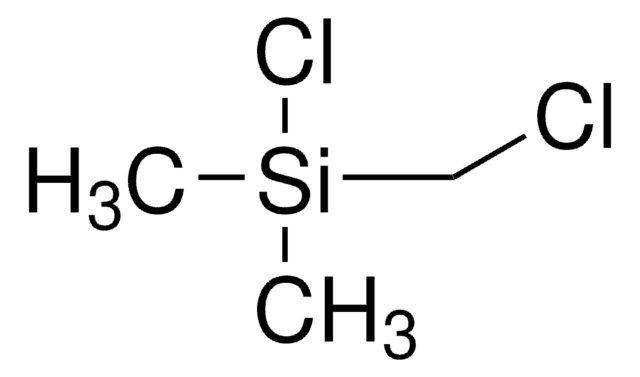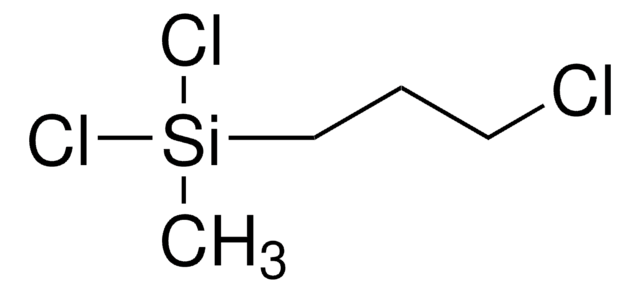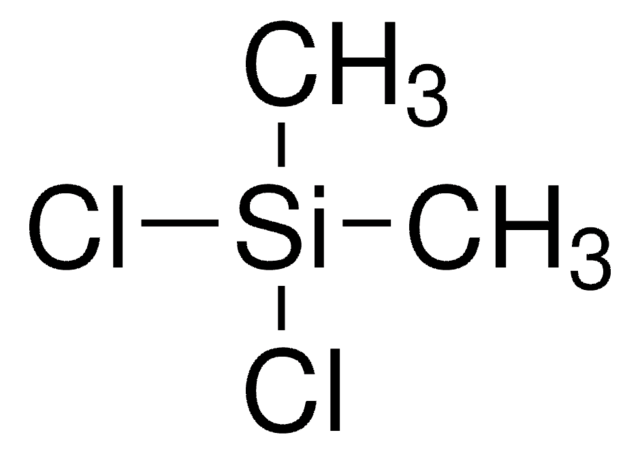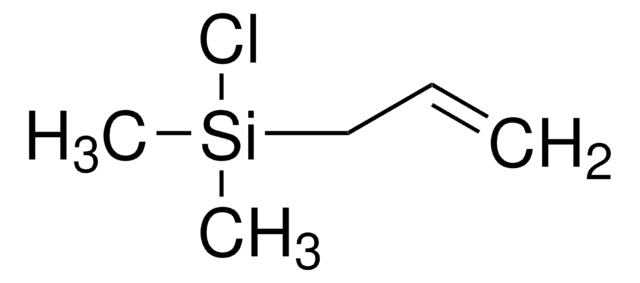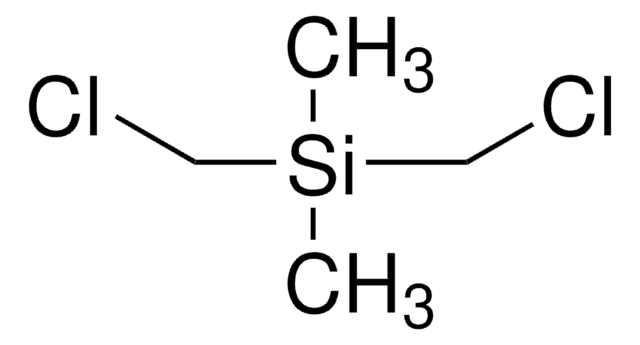26230
Chloro(3-chloropropyl)dimethylsilane
technical, ≥95% (GC)
Synonym(s):
(3-Chloropropyl)dimethylchlorosilane
Sign Into View Organizational & Contract Pricing
All Photos(2)
About This Item
Empirical Formula (Hill Notation):
C5H12Cl2Si
CAS Number:
Molecular Weight:
171.14
Beilstein:
506022
EC Number:
MDL number:
UNSPSC Code:
12352101
PubChem Substance ID:
NACRES:
NA.22
Recommended Products
grade
technical
Assay
≥95% (GC)
form
liquid
refractive index
n20/D 1.450
bp
177-179 °C (lit.)
density
1.046 g/mL at 20 °C (lit.)
functional group
chloro
SMILES string
C[Si](C)(Cl)CCCCl
InChI
1S/C5H12Cl2Si/c1-8(2,7)5-3-4-6/h3-5H2,1-2H3
InChI key
BJLJNLUARMMMLW-UHFFFAOYSA-N
Application
Chloro(3-chloropropyl)dimethylsilane can be used as:
- A starting material to prepare misonidazole-based 18F-radiolabeled organosilicon compounds as positron emission tomography (PET) ligands for medical imaging applications.
- An intermediate in the synthesis of block copolymers.
Signal Word
Danger
Hazard Statements
Precautionary Statements
Hazard Classifications
Skin Corr. 1B
Storage Class Code
8A - Combustible corrosive hazardous materials
WGK
WGK 3
Flash Point(F)
Not applicable
Flash Point(C)
Not applicable
Personal Protective Equipment
dust mask type N95 (US), Eyeshields, Gloves
Choose from one of the most recent versions:
Already Own This Product?
Find documentation for the products that you have recently purchased in the Document Library.
Universal methodology for block copolymer synthesis
Bellas V and Rehahn M
Macromolecular Rapid Communications, 28(13), 1415-1421 (2007)
Large and Giant Unilamellar Vesicle (s) Obtained by Self-Assembly of Poly (dimethylsiloxane)-b-poly (ethylene oxide) Diblock Copolymers, Membrane Properties and Preliminary Investigation of Their Ability to Form Hybrid Polymer/Lipid Vesicles
Fauquignon M, et al.
Polymers, 11(12), 2013-2013 (2019)
Design of silicon-based misonidazole analogues and 18F-radiolabelling
Bohn P, et al.
Nuclear Medicine and Biology, 36(8), 895-905 (2009)
Martin Fauquignon et al.
Polymers, 11(12) (2019-12-11)
In the emerging field of hybrid polymer/lipid vesicles, relatively few copolymers have been evaluated regarding their ability to form these structures and the resulting membrane properties have been scarcely studied. Here, we present the synthesis and self-assembly in solution of
Our team of scientists has experience in all areas of research including Life Science, Material Science, Chemical Synthesis, Chromatography, Analytical and many others.
Contact Technical Service